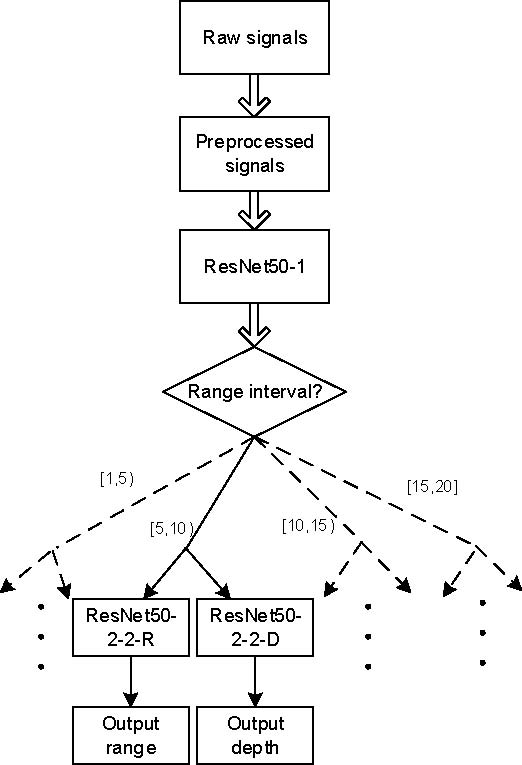Machine learning has shown its potential in ocean source localization where observed data are available as the training set. However, collecting real observations is often costly and even impractical in some scenarios.
Recently, researchers from the Institute of Acoustics of the Chinese Academy of Sciences (IACAS), collaborating with researchers from Scripps Institution of Oceanography, USA, presented a source-localization method in ocean waveguide with uncertain bottom parameters using deep learning. It employed the synthetic big data with tens of millions of samples to train a set of 50-layer deep Residual neural networks (ResNet50). Only one hydrophone was used to locate a single source.
The study has been published online in the Journal of the Acoustical Society of America in July 2019.
The synthetic big data were generated using an acoustic propagation model with a large number of hypothetical environments to handle the environmental uncertainty. A two-step training strategy was proposed to alleviate the training difficulty for the deep models with big data. The range intervals were first determined and then the source ranges and depths were solved by the deep learning models corresponding to the specific range intervals.

Figure 1. Source localization algorithm (Image by IACAS)
The performance of ResNet50 models were tested on simulated test data sets with different bottom parameters, source magnitudes, and SNRs (signal-noise ratio). The results showed that the proposed ResNet50 models performed well on various environments, slowly varying source magnitudes, and relatively high SNRs.
Experimental data further verified the localization performance of the approach in uncertain environments, where 88.8% range predictions had the absolute error below 1.5 km and the error of 83.8% depth estimates was within 10m.

Figure 2. Predicted source ranges (a) and depths (b) by the deep learning and SAGA methods (Image by IACAS)
The research was supported by the National Natural Science Foundation of China (Grant Nos. 11434012 and 11874061) and the Youth Innovation Association, Chinese Academy of Sciences.
Reference:
NIU Haiqiang, GONG Zaixiao, Emma Ozanich, Peter Gerstoft, WANG Haibin, LI Zhenglin. Deep-learning source localization using multi-frequency magnitude-only data. Journal of the Acoustical Society of America. (vol. 146, no. 1, pp. 211-222, July 2019). DOI: 10.1121/1.5116016.
Contact:
ZHOU Wenjia
Institute of Acoustics, Chinese Academy of Sciences, 100190 Beijing, China
E-mail: media@mail.ioa.ac.cn